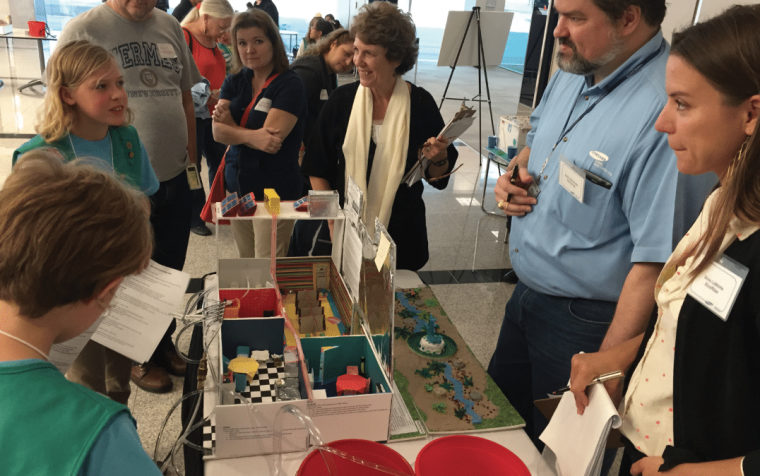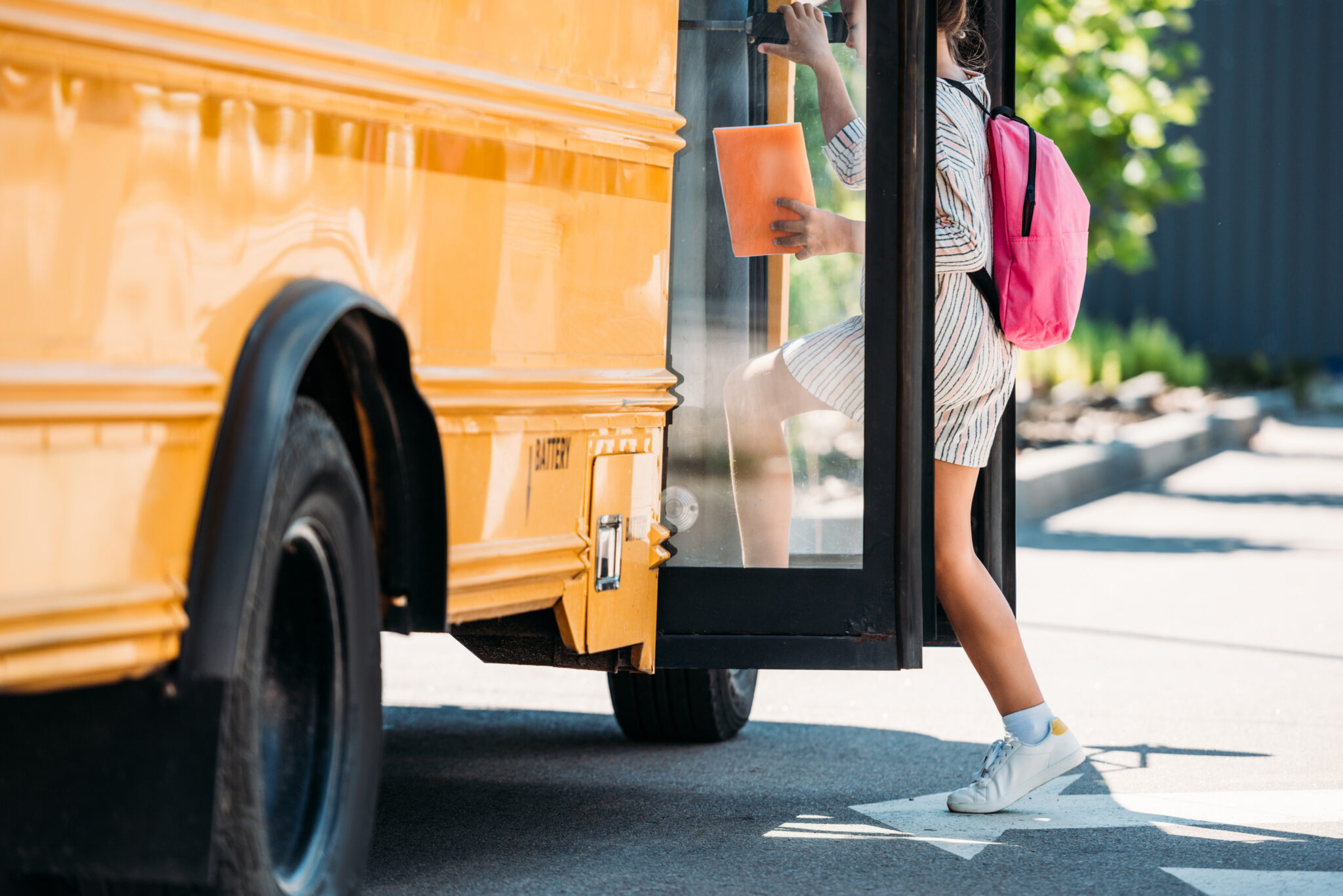Do a Google search for the phrases problem solving and STEM, and millions of hits immediately pop up. Problem-based (or project-based) learning has long been considered a facet of challenging instruction for gifted learners, with the U.S. Department of Education (Lettvin, n.d.) advocating for links to real-world problems as a key factor in motivating interest in STEM fields, particularly for young girls and students from underrepresented populations. Additionally, in their study of successful STEM programs for girls, Mosatche, Matloff-Nieves, Kekelis, and Lawner (2013) discovered that girls tended to prefer projects that allowed them to work collaboratively with one another, in addition to needed exposure to strong role models in an “engaging and relevant curriculum” (p. 23).
In the previous issue of TEMPO, we spotlighted a group of Central Texas Girl Scouts pursuing their passions for engineering through participation on an extracurricular robotics team. When I first contacted the Girl Scouts to learn about their STEM pursuits, it was actually in response to a fascinating project, one that combined a challenging, real-world problem with the chance for students to collaborate in teams and work with mentors.
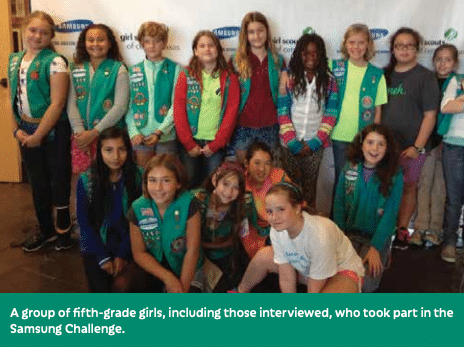
The Samsung STEM Challenge brought together teams of girls ranging from fourth graders to high school seniors with engineers from the company with the mission of discovering ways to conserve and efficiently use water at Samsung’s Austin-based plant—a true-to-life problem, as one participant, Angelica explains, noting that the plant had discovered it was wasting water in some of its processes. The teams of girls spent 6 weeks last fall working on their ideas, creating scale models of the plant to showcase their findings, and then presenting their solutions to the Samsung engineering team.
During the course of the project, the girls were given the chance to work directly with mentors from Samsung, but largely took on many of the responsibilities of the project, including, as Angelica told me, researching what other large corporations were doing to conserve water. Angelica and her team looked directly at Apple (which also has a large corporate campus in Austin) and its conservation efforts before developing solutions that included taking the water used to wash utensils in the company kitchen and recommending it be recycled to water plants. “Looking for new ways to conserve water was challenging,” Angelica added, but she was “was inspired by wanting to solve a problem that would help the environment if we solved it. Also knowing that a big company like Samsung needed our help inspired me to work hard.”
The project was definitely one that required the girls to think in new ways, as team member Rebecca noted. It wasn’t just about finding ways to recycle anything from sweat to wastewater, but also to solve problems that cropped up along the way—like the many leaks they discovered. They also had to deal with other minor problems, her teammate Kara told me, such as getting the pieces of tubing to function properly with their scale model of the company’s plant.
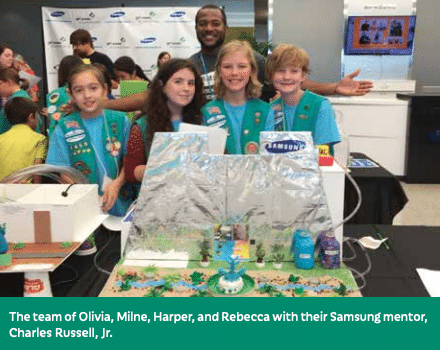
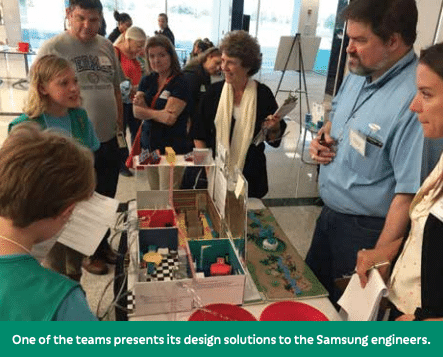
All in all, the girls spent several joint and individual sessions over the course of the 6-week timeframe working on their solutions and models, having to both learn to work collaboratively and stick with their commitment to finding a solution. In the end, Angelica felt that the project challenged her to follow through on a hard project and “think very deeply.”
All of the girls I interviewed were adamant that other kids be given similar chances to solve real-world environmental problems like the Samsung Challenge. Kara suggested that young people “might know something an adult doesn’t because we are living in a new generation and technology is getting better.” And Angelica provided sage wisdom for kids and adults alike taking on such challenges: “Don’t give up when it gets hard—you may be close to the solution.”
References
Lettvin, E. (n.d.). Engagement, creativity and inspiration found in new afterschool STEM programs. Retrieved from http://www.ed.gov/edblogs/oii/2015/04/stem-programs-at-the-department-of-education-supporting-teachers-and-students-2/
Mosatche, H. S., Matloff-Nieves, S., Kekelis, L., & Lawner, E. K. (2013, April). Effective STEM programs for adolescent girls: Three approaches and lessons learned. Afterschool Matters, 18–25. Retrieved from http://www.niost.org/pdf/afterschoolmatters/asm_2013_17_spring/ASM_2013_spring_6.pdf


